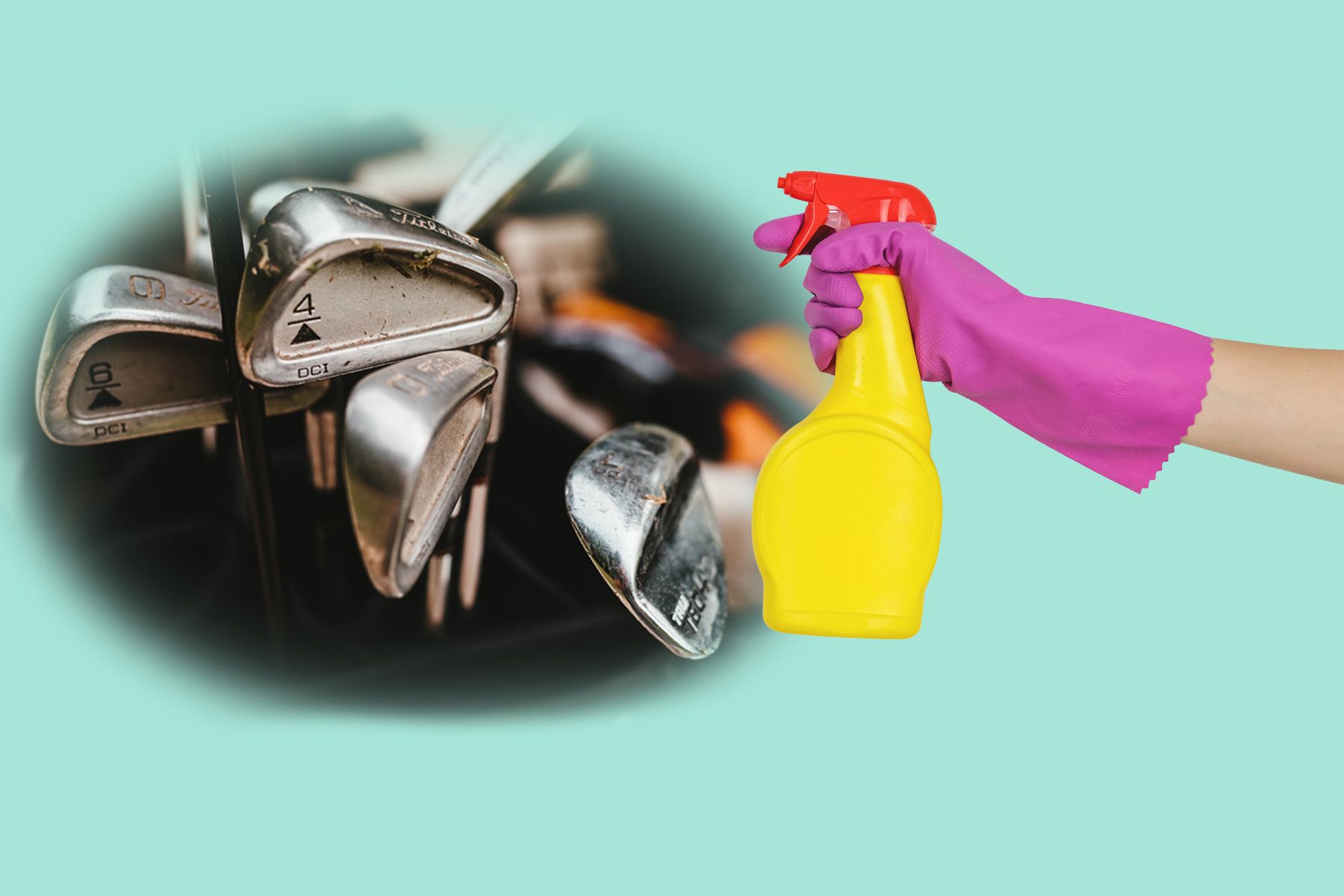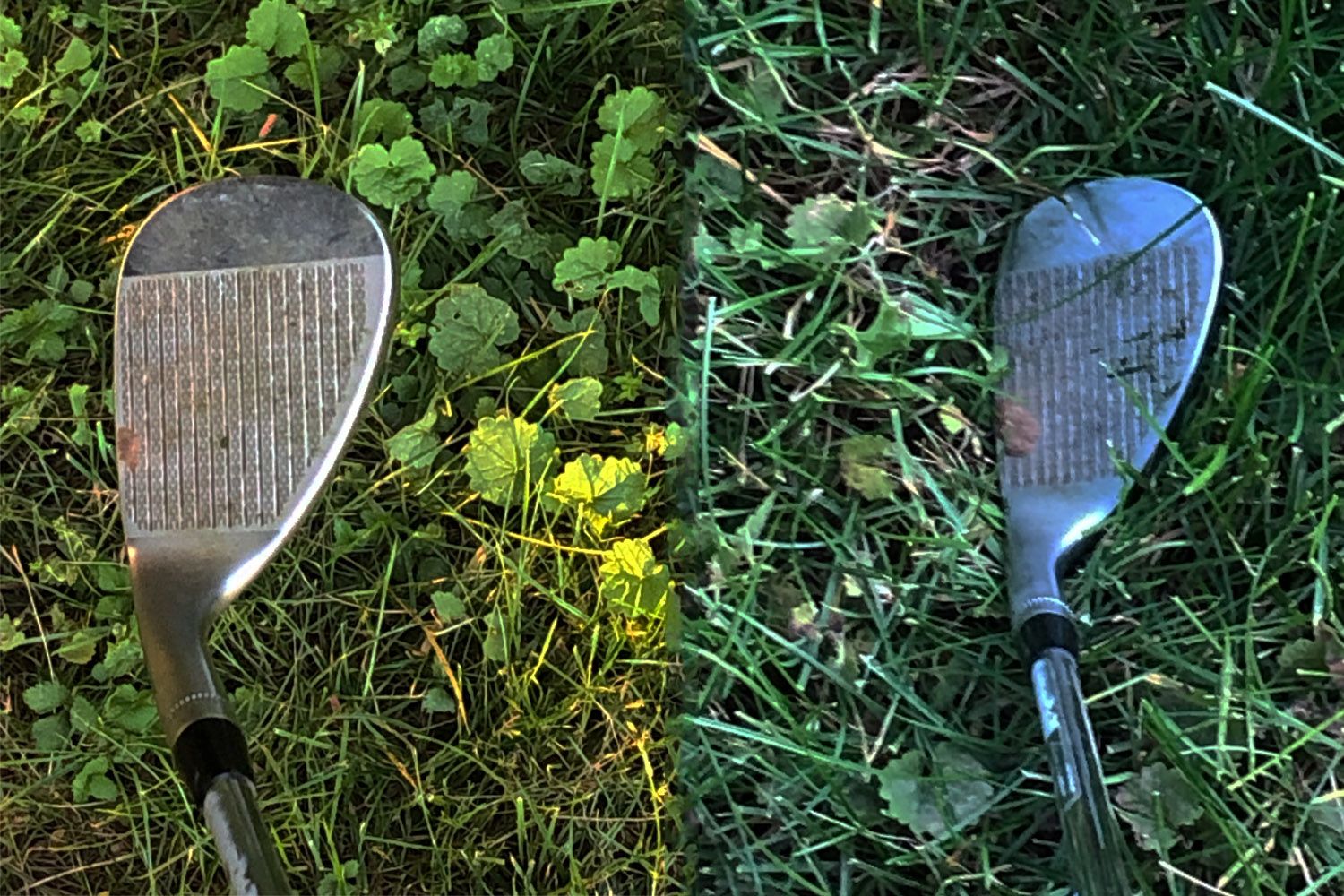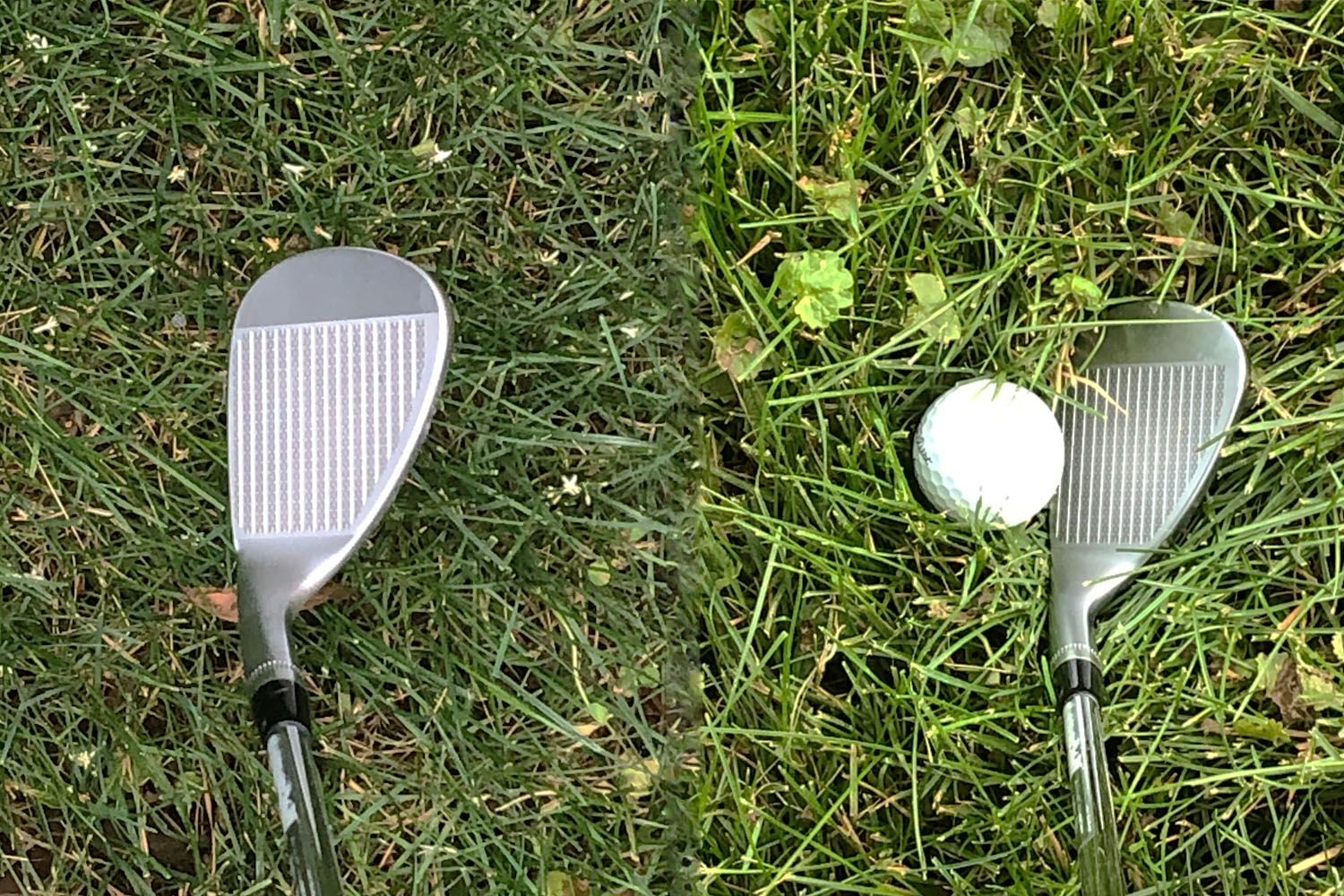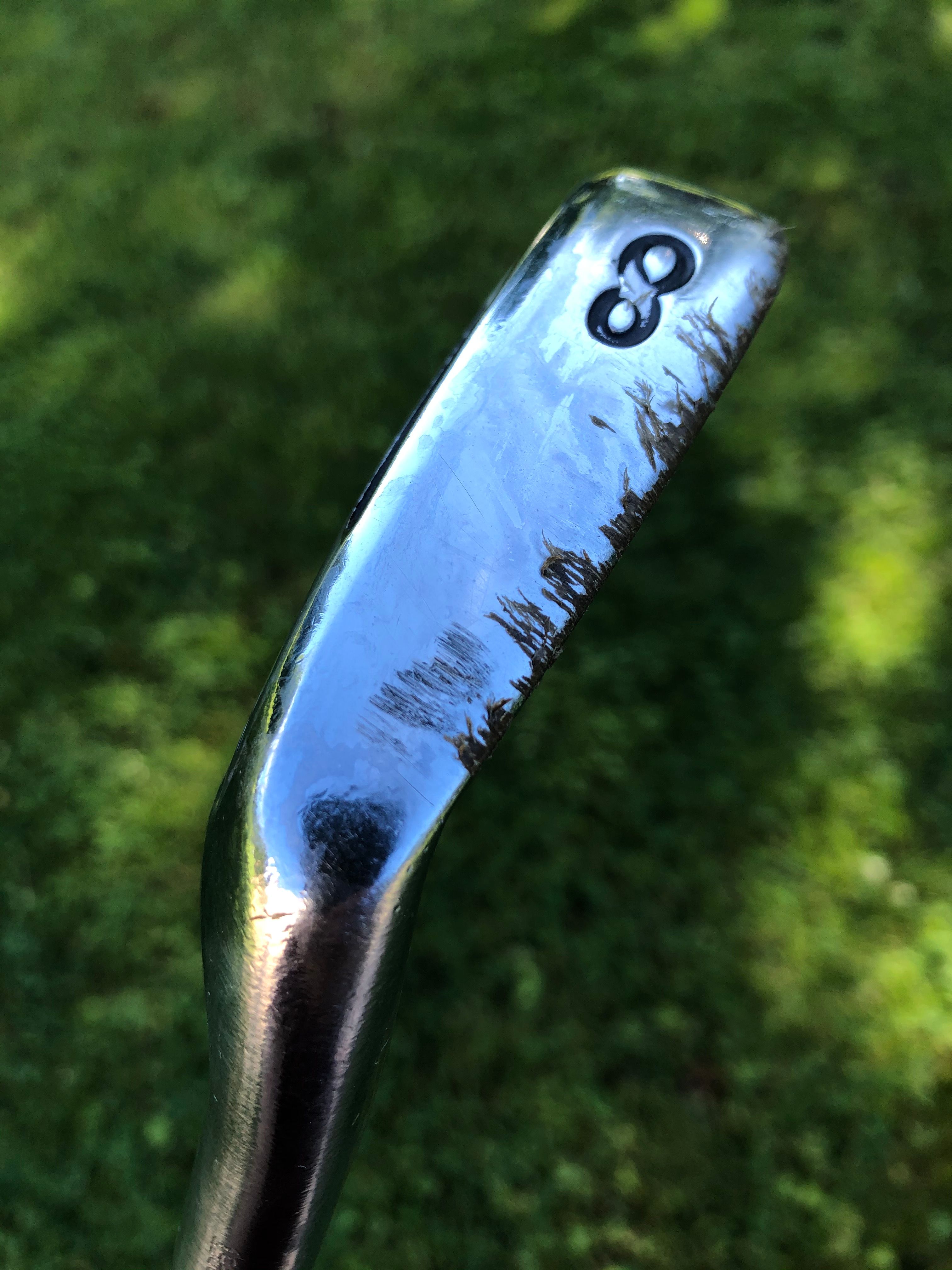You're Reading: 5 Reasons to Clean Your Clubs

There’s nothing like hitting a new club. So much hope and promise in your swing and game after an upgrade to your equipment. Not to mention the technological improvements that enhance your swing. However, it is seldom, especially amongst recreational golfers, that those clubs are ever cleaned and ready to provide close to the same feeling and performance associated with a fresh face.
Without a doubt, this is a misstep, and very well is hurting your potential on the golf course. Ready to stop costing yourself strokes? Here are five reasons why you should clean your clubs every time you play:
This is probably the most significant benefit of having clean clubs and the number one reason that will motivate golfers to take care of their clubs. In truth, the performance aspect is three-fold.
Dirty clubs simply do not have the same effect on a golf ball as do their cleaner counterparts. Most noticeable is the lack of backspin. Before the 1920s, club faces were smooth. It was not until the Scottish professional golfer Ben Sayers invented backspin irons – the first grooved clubs. Interestingly, these clubs were deemed performance-enhancing and were subsequently outlawed by both the R&A and USGA in 1921 and 1924, respectively. When the game’s governing bodies ban something, you know that whatever they’ve decided to ban helps your game. Grooves provide friction at impact that helps to impart spin.
Dirty grooves => smooth face => loss of backspin.
To be clear, you will still get backspin; simply the loft of the club generates spin. However, grooves will certainly give you a boost. Simon Daddow and Neil Wain from Today’s Golfer demonstrated the difference can be as much as 50%.
Their results are not an anomaly. In the embedded video below, Thomas Campbell and Drew Mahowald from 2nd Swing Golf found similar results. As you can see, the differences were considerably more pronounced with Thomas’s 52 degree wedge which he averaged 10,501 rmp with the clean wedge and just 5,716 rmp with the dirty wedge (45.65% loss).
It is possible that a less backspin will lead to shorter distances. Most often, this happens when a golfer’s swing speed is a little slower and does not generate as much spin as a faster swing. A certain amount of spin is necessary to improve a ball’s height and carry distance, especially with higher-lofted clubs (check out our article on the flight of the golf ball). Therefore, if a golfer is below the threshold of optimal spin, dirty grooves could lead to a loss in distance. Golfers like Bryson DeChambeau are at the other end of the spectrum and need to reduce their lofts to reduce spin.
Moving on to consistency, by removing the variables of debris, mud, or grime, your shots will have more consistent results. Note the data generated by James Robinson in the video below.
After hitting 10 shots with a clean and dirty 7-iron, he too found losses in backspin, losing on average about 500 rpm. Additionally, though, he experienced deviations of 5.6 yards on carry distance and 5.7 yards total distance with his clean iron. Compare this to his shot with the dirty iron, and the deviations are 7.2 yards and 8.1 yards, respectively. In golf, one of the most critical things to low scores is consistency. While 2 to 3 yards difference may not sound too important, golf is already a game of inches. Why complicate it with another 72 inches?
Predictability stems from improved consistency. The more confident you are in the exact distance and spin you will get with a given club, the better you will handle both your shot selection and commitment to the shot. Having this confidence in what to expect is especially important in competition or under pressure.
Let’s be honest. The look of a fresh and clean blade is unmatched. A clean set of irons gives your whole bag a more pristine, newer, and impressive look and vibe. Furthermore, when you address the ball with a clean clubface, it’s so much easier to envision a pure strike. In short, from merely an aesthetics perspective, a clean club versus a dirty club is night and day. Wouldn’t you agree?


We all know that golf is an individual sport played not against other golfers but against the course itself. While golfers are certainly measured up to their competitors, the ultimate objective is to score the fewest strokes possible by overcoming the challenges and obstacles of the golf course itself. However, walking to the tee with a clean set of clubs when you know your playing partners (even if they are just your weekend golf buddies) have neglected to put in the time to clean their own, immediately should give you confidence. In fact, according to a recent survey, if you clean your clubs, you are in the top 50%.
Does this mean that you will automatically drop 10 strokes from your score? Probably not. But being prepared is key to success in anything. The more prepared you are the more confident you will be when it’s time to perform. Just take it from to Masters champion and former World No. 1 Fred Couples:
"When you’re prepared, you’re more confident. When you have a strategy, you’re more comfortable."
— - Fred Couples
You might not relate the attributes of motivation and mindfulness to such a simple task as removing the dirt from your golf equipment. Nevertheless, the act of cleaning your clubs should have similar effects as do other cleaning tasks. It really comes down the psychological factors involved. An obvious example is making your bed in the morning. You have likely heard (perhaps multiple times) that making your bed is a great way to start your day. The most commonly touted benefit is the sense of accomplishment this task gives you. This sense of accomplishment even for something that takes no more than a few minutes motivates you to accomplish another, bigger task. Ideally, you find yourself on a productivity snowball, where the motivation from increasingly-more-challenging tasks enables you to tackle subsequent ones.
Additionally, like making your bed, cleaning your clubs declutters your space and can help to declutter your mind as well. Lastly, getting into the habit of cleaning your clubs after each round, can help to develop other healthy habits and routines in the rest of your non-golfing life. After all, golf is the closest game to the game we call life.
Getting outdoors is great for your health. The Vitamin D from the Sun boosts your immune system, improves sleep, encourages better calcium absorption and stronger bones as well as other benefits. Moreover, the earth (i.e., soil) has been shown to be a solution to fighting free radicals, unpaired and unstable atoms that are a byproduct of the normal metabolism and can harm cells. It’s no wonder that playing golf has been shown to increase life span.
Despite these benefits, golf courses are maintained with a multitude of chemicals and pesticides which are virtually essential to ensuring healthy and closely-mown fairways, greens, etc. It is probably no surprise that the chemicals that kill weeds are harmful to humans. While this may not be something about which to be overly alarmed, it is worth being mindful and careful. The divots, waste left by geese, or any other debris that you collect on your clubs during your round of golf contain the remnants of these chemicals or possibly other bacteria. Bottom line: taking the time to clean your clubs is simply hygienic.
When I clean my clubs, I try to only clean the clubs that I actually used during my round and therefore those that got dirty. This may seem obvious and only natural. However, doing so has a twofold effect:
Again, the first benefit is common sense. The second one is the one that should be of greater interest. In this way, cleaning your club provides you with an opportunity to review your round, reflecting on the shots you hit with different clubs. With this knowledge, you can assess with which clubs you are struggling and remember the specific misses that you had. Furthermore, by routinely cleaning your clubs each round, you will definitely get a feeling for which clubs you hit the most.
Odds are, if you can improve your game with the clubs hit most frequently, you will see the greatest possible improvement to your overall game. Consequently, rather than going to the range and practicing your long irons for example, because you remember the couple long-iron shots you missed over the course of a couple rounds, you can optimize your practice by working on the shots and clubs that really require your attention. What you will likely find is that your wedges will often be the ones that get the most use. It’s no coincidence that tour players will cycle through several wedges in a single season.
The actual process of cleaning your clubs should only take about 5 to 10 minutes. Ideally, you will have a roomy sink available. Use hot water and start cleaning. Don’t forget about your driver and putter. If this sink does not exist for you, fill a bucket with hot water instead.
From what we know about performance, having clean grooves is important. The best solution to this is an old toothbrush. An electric toothbrush can be helpful, but a manual one is perfectly fine as well. If you have particularly muddy grooves, you may need to either run the club under the faucet or soaked in the bucket for longer.
If you have some tough-to-remove-marks, products like Goof Off spray can be quite handy. Additionally, after a session at the driving range, you may find that you club looks like this if you were hitting off Astroturf or artificial grass mats.

Again, these clubs just need a little extra soaking to free up the turf stains so that they come off with your trusty toothbrush.
There you have it: 5 (and 1 more) reasons to clean your golf clubs. At the end of the day, it’s a simple and easy task. Who knows, it very well might be what’s holding back your game. Of course, make sure you have a clean golf ball to match.